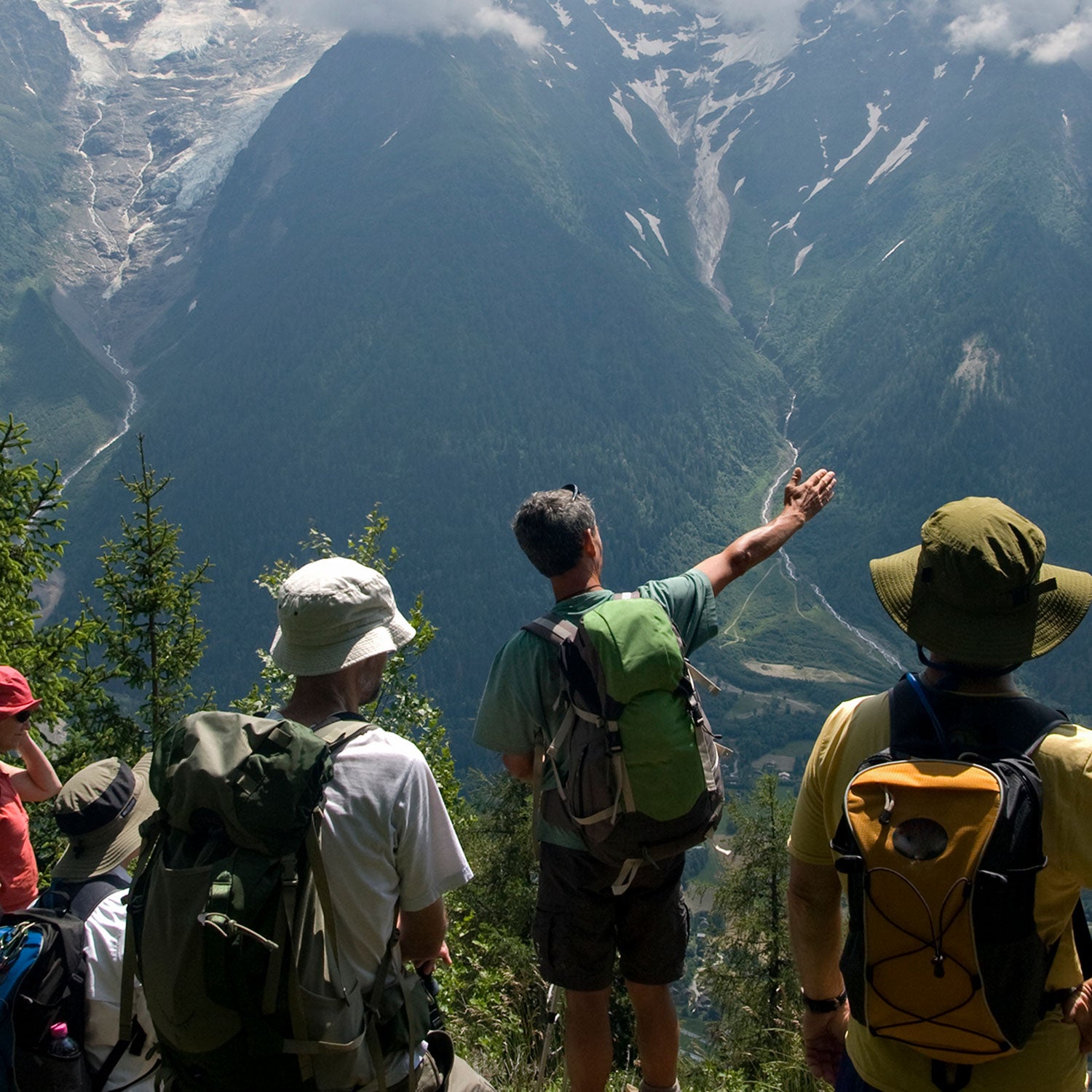On a Saturday in October of 2021, Carlos Ramirez pushed through a gentle rain towards the summit of New York’s Balsam Lake Mountain. He couldn’t help but smile as he excitedly hopped over the swelling streams that intersected the trail, which meandered through a dense balsam fir forest. Ramirez, 52, was among nearly a dozen hikers on a guided day trip with Brooklyn-based (DBA).
This was Ramirez’s first outing with DBA. Aside from the occasional hike during family visits to Puerto Rico and Costa Rica, the New Yorker had limited experience in the outdoors. Growing up in the city, he had minimal exposure to “outdoorsy” individuals and no transportation to rural areas. But the recent end of New York City’s pandemic restrictions had provided the boost he needed to get outside.
“I felt like I needed something to get me out of the city,” Ramirez says. “When my friend told me about his hike with DBA, I was like, ‘that’s awesome because I don’t have a car and can’t get to the Catskills.’ So I went, and then I just fell in love with it.”
Since then, Ramirez has joined the company on more than a dozen guided hikes in the Catskills. His gear collection and outdoor knowledge has grown with each trip to the mountains.
Why Hiking Guides Are Worth It
Though a major advantage of hiring a guide for city-based adventurers is the transportation, gear and planning many companies offer, guided hikes aren’t only for city-dwellers who lack cars or outdoor experience. Even seasoned hikers can benefit from hiring someone to lead them during a day or overnight adventure.
“A good guide can help you fulfill your intention of going out there,” said Dave DiCerbo, a hiking guide and founder of DBA. “If the intention is healing, a good guide should be able to do that. If the intention is learning or finding a new place, a good guide should be able to do that, too.” For example, if a client is grieving a loss and is hoping to take space and time to reflect, a good guide would organize a quiet, easier hike, pointing out and explaining signs of regeneration in nature along the trail.
“In its simplest form, what guides do is break down barriers to the outdoors,” he adds. “It’s very easy to see why a person who’s never been outdoors before should hire a guide—safety and comfort. But lack of experience is only one specific barrier. There are so many other barriers that guides can help overcome.”
Here are three ways that hiring a guide can make all the difference on your next hiking trip.
�۴dz�’l�� Gain Backcountry Confidence
Unfamiliarity with local hiking trails and how to safely and comfortably execute a day hike is often a barrier to the outdoors. Guides should have a deep knowledge of the terrain they work in, and can organize an itinerary based on a group’s goals, fitness level and time restraints. This knowledge and skill can be passed along to hikers, eventually getting them to a point where they’re comfortable heading out on an unguided trip.
For longer trips, there’s even more to know. Leave No Trace (LNT) principles, how to pick a camping spot, and how to manage food and water in the backcountry are all basic things that many in the outdoor community learn from experienced friends. But guides can fill the gap for those who don’t have anyone to teach them, or don’t want to take the time to find willing mentors. A single guided trip can expedite the learning process, which goes a long way toward giving someone the confidence and knowledge to responsibly head out alone.
“I look back now and think about all the skills I learned through trial and error,” says DiCerbo. “It took me five months of going hiking and adventuring alone to learn through trial and error and discomfort what I probably would’ve learned in a weekend if I had hired a guide.”
�۴dz�’l�� Discover Nature On A New Level
Even experienced hikers and backpackers can gain knowledge about different ecosystems that can only be acquired by reading or going out with someone who already has an understanding of these natural spaces.
When Roxanne Dawson, a Colorado-based adventurer who has been hiking, backpacking and snowboarding in the backcountry for ten years, joined a group of women on a guided hike in southern Utah with and , she learned more than she expected to.
“I really learned so much more about the land as we were traveling through it—the history both geologically and anthropologically,” says Dawson. “It was interesting to sit down at the campsite and have both guides lay down the geological history from 2,000 versus 10,000 versus 200,000 years ago. To be in the land, while speaking and learning about it, was such a different experience than I would’ve been able to have on my own.”
According to DiCerbo, one of the most underappreciated values of guides is their ability to help clients appreciate the ecosystems they travel through.
Seeing how geology, ecosystems, and how different plants and animals interact with one another is a learned skill that enhances the overall outdoor experience. This understanding helps outdoor adventurers better connect with nature, maximizing what they are able to get out of each outing.
“It’s kinda cool, especially being an inner city person,” Ramirez says, remembering how his first guided hikes in the Catskills changed his perspective on the natural world. “I didn’t know much about plants except the ones you buy at the store. And now I’m reading books about plants. It’s nice when you’re willing to open up and get into something that’s unique.”
Gaining an appreciation for the natural environment also helps with executing LNT principles—understanding the value of different plants and why they shouldn’t be trampled on, knowing why it’s important to keep your snacks out of reach of wild animals, and so on.
�۴dz�’l�� Learn to Navigate Foreign Terrain
Hiking and backpacking excursions can take us to far-flung places in search of adventure, which adds an additional layer of unfamiliarity beyond the natural ecosystems.
When Brent Potter started in 2008, the value of his business came from offering a cultural experience.
“You don’t need a big mountain guide for safety on Mount Fuji,” says Luke Cummings, a Tokyo-based guide who co-owns Fuji Mountain Guides and with Potter. “But there are four trails that go up, and we choose the second least climbed trail, which has a more local feel. You have huts run by the same two families for hundreds of years.”
For Cummings, a Japanese mountain guide who caters to international travelers provides value by answering questions about the country and its culture in addition to natural ecosystems, helping clients have an experience they wouldn’t have otherwise.
How to Find a Hiking Guide
Most popular mountain towns and outdoor-focused destinations have an abundance of guide services that can be found with a quick Google Search. There are also sites like , which partners with guide companies to promote excursions that can be filtered by type of trip, location and dates—similar to hotel and airline booking platforms.
Typically, a guided hike can cost between $100 and $300 per person per day, depending on the area and scope of the trip. But there are also various non-profit organizations—like the (AMC) in the Northeast and in the Pacific Northwest—that offer trips, courses and seminars for free or a small fee to members. Many national and state parks also offer similar trips and programs.
REI, which was originally founded as an outfitter in 1935, has also grown its presence in the guiding world in recent years, offering a number of excursions across North America through . A number of REI locations also offer scheduled , like backcountry navigation and wilderness first aid.
While there are certification programs through organizations like the , there are no required certifications needed to become a guide, aside from what each individual company requires. Often, a guide company’s website will have a section discussing each guide’s experience, background and any certifications they have like Wilderness First Responder (WFR) or Wilderness First Aid (WFA)—at least one of which every guide should have.


